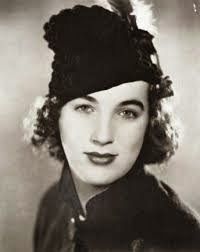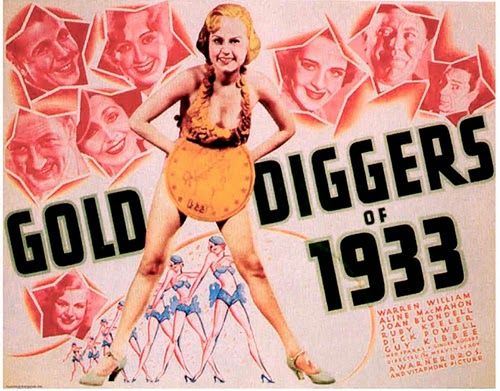A witty play on words from Shakespeare’s iconic play, Merry Wives of Reno (1934), focuses on the muddled lives of three quintessential Precode couples – perfect newlyweds, a cheating much younger wife and an older couple that never seem to see eye-to-eye. The champions of the film are three second banana staples of the early 1930’s – Glenda Farrell, Guy Kibbee and Hugh Herbert - who cause trouble for the youthful loved up couple, Donald Woods and Margaret Lindsay. Their performances only outdone by the hilarious comic relief from Eloise, a playful, animated and always present sheep.
Frank (Woods) and Madge (Lindsay) are a sugary married couple celebrating their first anniversary. As gifts they buy each other expensive overcoats and plan a romantic diner. Their neighbours, however, are the unhappy couple Tom (Kibbee) and Lois (Ruth Donnelly) whose decade’s long marriage has been filled with arguments, plate throwing and husbandly infidelity. Bunny (Farrell), a wealthy wife, with her husband out of town is bored and looking for excitement invites Frank over on the pretence of buying a boat from him. He soon finds out she wants more than just a sea vessel and tries desperately to leave the apartment before the energetic Bunny causes him more trouble. Thankfully it comes in the form of Tom who is also having a casual fling with the bored housewife arrives, drunk, looking for a fun time. Frank exits, negligently, leaving his new overcoat behind. Minutes later in another comedic twist, Bunny’s husband, Colonel Fitch (Herbert), returns from his business trip, glowing and satisfied, bringing along his new prized possession, Eloise the sheep. Flustered and still intoxicated, Tom exits, also unfortunately leaving his overcoat beside Frank’s in Bunny’s hall closet.
| Margaret Lindsay and Ruth Donnelly |
When the husbands finally return overcoat-less – and one of them drunk – to their wives dual arguments ensue. Both creating invented stories as to the location their jackets and not succeeding to persuade their spouses that they are innocent. Impulsively, Madge and Lois conclude that the only solution is to divorce their lying, cheating and mistreating husbands and head to Reno. On the train ride the wives, in a serendipitous moment, finally meet, discover their connection and resolve to leave their marriages behind and find laugher and good times in Reno. Hot on their tails is their jilted husbands who have also joined forces desperate to win their wives back and restore their domestic homes. Following behind is Bunny and Colonel Fitch also on the train destined for Reno with a hidden Eloise under the passenger’s seats.
They all stay at a traditional Reno hotel filled with parties, alcohol and newly divorced women. All paying customers can have any need met by the accommodating concierge, Al, played by the hilarious Frank McHugh, who spends most of his time organising parties and acting as a kind of gigolo for lonely women. The couples constantly switch from separation to reconciliation as they navigate through misunderstandings, drunken nights and other women. In the end all it takes is a taste of their own medicine to bring the wives back to the comfort of their husband’s arms and a happy conclusion for this light-hearted Warner Bros. comedy.
The use of supporting character actors brings a different edge to the picture. Although it is witty and poignant when it comes to marriage fidelity and infidelity, the film lacks slightly with casting. Both Farrell, Gibbee and name are perfect accompanying actors but seem not strong enough to carry a picture with name and name also a little weak. It appears to be a truly ensemble cast that could have benefited from the inclusion of someone like Joan Blondell or Warren William. The film shines with Eloise who is surprisingly vibrant and dramatic for a sheep. Frank McHugh is also brilliantly included as the naughty but helpful concierge. Merry Wives of Reno is not a great Precode drama or commentary on social issues but is a fun, light way to spend an hour in both in the 30’s and now.












































































